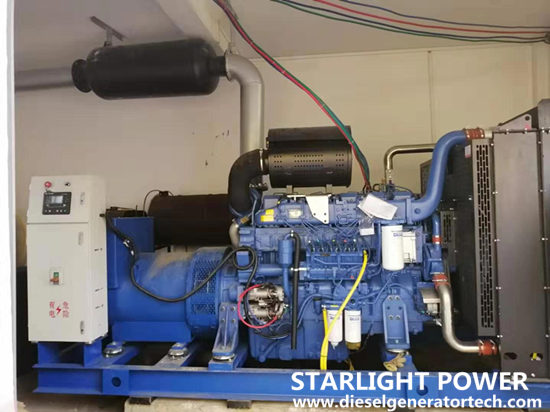What is generator load rejection?
Because the end user's power load is reduced (for example, large-scale electrical equipment failure or large area line failure and power failure), when the generating capacity of the generator in the power plant exceeds that delivered to the user, the power plant is required to reduce the generating capacity to the value, which is corresponding to the actual load. Or because of the internal reasons of the power plant, the circuit breaker at the outlet of the power supply network trips suddenly, and the load of the generator basically drops to zero. These executive actions of the power plant are called load rejection.
Load rejection can be divided into active load rejection and fault load rejection.
Active load rejection: when the active power provided by the power grid is greater than the active power required by the system, it will actively throw off some unimportant loads to improve power supply quality of power grid.
Fault load rejection: in addition to the abnormal power grid, the main switch trip of the generator and the main steam valve trip of the turbine are the causes of this fault. When power plant suddenly throw away a large number of load, the steam flow of the secondary circuit drops sharply, which makes the temperature and pressure of the primary circuit coolant rise rapidly. This is a load rejection accident.

What is the phenomenon of generator load rejection?
1.Sound of generator set suddenly changes, active and reactive load drop to zero.
2.The speed of the generator rises first and then falls, the regulating system operates well, and the speed is controlled below the action value of overspeed protection.
3.Cause the terminal voltage to rise.
4.If the governor does not work or the valve is stuck, the rotor speed will rise and produce huge centrifugal force, which will damage the unit parts.
How to deal with generator load rejection?
1.Check the protection action, judge the fault reason of generator and deal with it.
2.If the generator set does not trip, immediately adjust the generator voltage to normal value to maintain the operation of auxiliary power. If the auxiliary power cannot be maintained, start the standby transformer with auxiliary power .
3.If the excitation switch is tripped, check the auxiliary power, and it shall be switched on successfully. If the standby power supply is not switched on successfully and there is no standby "branch overcurrent", immediately test the auxiliary power standby power supply.
4.Complete the related operation of load rejection.
5.After the completion of load rejection, the generator shall be comprehensively inspected. After finding out the causes and handling, report to the shift chief operator that there is no abnormality, apply to connect the generator to the power grid and start it as hot state.
For diesel generator set load rejection, the electrical operator on duty shall decisively pull off the main outlet switch that fails to be automatically disconnected, then disconnect the generator set from the system, handle the emergency shutdown of the unit, and start the barring motor according to the regulations after the unit stops stably, to make the unit in shutdown protection state. Then, find out the cause of the fault. If the fault can be eliminated in a short period of time, make preparations for starting again. If the fault cannot be eliminated in a short period of time, arrange power failure measures and turn to maintenance.
Influence factor of load rejection.
1. Governor characteristics on load rejection transition process.
2. Regulating object characteristics on load rejection transition process.
3. Linear and nonlinear turbine models on load rejection results of units.
In order to observe the speed of the unit and the action of the main components of the speed governing system in the transition process, so as to judge the dynamic stability of the speed governing systemt, we can do load rejection test in the test run.
Load rejection test should be the sudden drop of load from 100% to zero. The power output of the generator is derived from the mechanical power conversion of the power machine. When the load changes, the speed will change, we need to reduce the throttle through the speed regulating mechanism to make the speed stable rapidly and the output voltage frequency change little. Load rejection test should be the limit test of power reduction.
Starlight generator manufacturer not only provides technical support of generator, but also supplies diesel generator set. If you have plan to purchase recently, welcome to contact us by sales@dieselgeneratortech.com, or call us +86 134 8102 4441. We will work with you.
Comments
Post a Comment